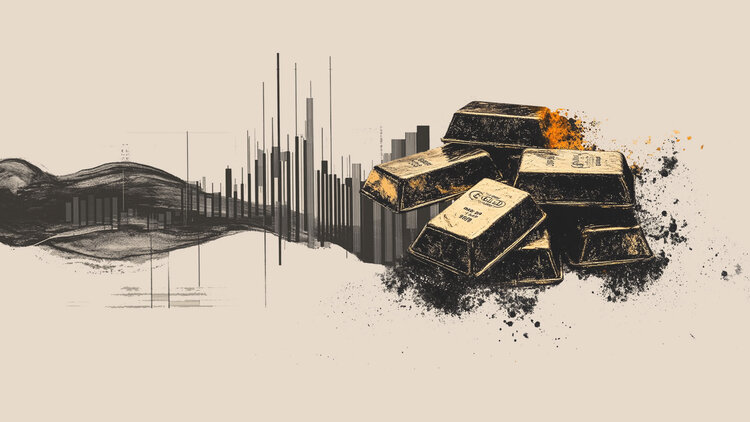Gold prices rose in United Arab Emirates on Thursday, according to data compiled by FXStreet.
The price for Gold stood at 398.25 United Arab Emirates Dirhams (AED) per gram, up compared with the AED 396.17 it cost on Wednesday.
The price for Gold increased to AED 4,645.13 per tola from AED 4,620.85 per tola a day earlier.
| Unit measure | Gold Price in AED |
|---|---|
| 1 Gram | 398.25 |
| 10 Grams | 3,982.52 |
| Tola | 4,645.13 |
| Troy Ounce | 12,387.03 |
Daily digest market movers: Gold holds firm as the Greenback, US yields plunge
-
The weakness of the US Dollar might keep Gold prices underpinned. The US Dollar Index (DXY), which tracks the value of the Dollar against a basket of peers, falls 0.44% to 98.61, reaching four-day lows.
-
US Treasury yields are collapsing; The US 10-year Treasury yield has dropped five basis points (bps) to 4.42%. US real yields followed suit, falling by five basis points to 2.13%, boosting Bullion‘s advance.
-
US inflation rose less than expected in May, with headline CPI up 2.4% YoY, below the 2.5% forecast but slightly above April’s 2.3%. The Core CPI remained steady at 2.8% YoY, matching the previous month’s figure and indicating persistent yet stable underlying price pressure.
-
Geopolitical tensions remain high as US President Trump told Fox News that Iran is becoming much more aggressive in nuclear talks. The Iranian Foreign Minister said, “As we resume talks on Sunday, it is clear that an agreement that can ensure the continued peaceful nature of Iran’s nuclear program is within reach — and could be achieved rapidly.”
-
Money markets suggest that traders are pricing in 47.5 basis points of easing toward the end of the year, according to Prime Market Terminal data.
FXStreet calculates Gold prices in United Arab Emirates by adapting international prices (USD/AED) to the local currency and measurement units. Prices are updated daily based on the market rates taken at the time of publication. Prices are just for reference and local rates could diverge slightly.
Gold FAQs
Gold has played a key role in human’s history as it has been widely used as a store of value and medium of exchange. Currently, apart from its shine and usage for jewelry, the precious metal is widely seen as a safe-haven asset, meaning that it is considered a good investment during turbulent times. Gold is also widely seen as a hedge against inflation and against depreciating currencies as it doesn’t rely on any specific issuer or government.
Central banks are the biggest Gold holders. In their aim to support their currencies in turbulent times, central banks tend to diversify their reserves and buy Gold to improve the perceived strength of the economy and the currency. High Gold reserves can be a source of trust for a country’s solvency. Central banks added 1,136 tonnes of Gold worth around $70 billion to their reserves in 2022, according to data from the World Gold Council. This is the highest yearly purchase since records began. Central banks from emerging economies such as China, India and Turkey are quickly increasing their Gold reserves.
Gold has an inverse correlation with the US Dollar and US Treasuries, which are both major reserve and safe-haven assets. When the Dollar depreciates, Gold tends to rise, enabling investors and central banks to diversify their assets in turbulent times. Gold is also inversely correlated with risk assets. A rally in the stock market tends to weaken Gold price, while sell-offs in riskier markets tend to favor the precious metal.
The price can move due to a wide range of factors. Geopolitical instability or fears of a deep recession can quickly make Gold price escalate due to its safe-haven status. As a yield-less asset, Gold tends to rise with lower interest rates, while higher cost of money usually weighs down on the yellow metal. Still, most moves depend on how the US Dollar (USD) behaves as the asset is priced in dollars (XAU/USD). A strong Dollar tends to keep the price of Gold controlled, whereas a weaker Dollar is likely to push Gold prices up.
(An automation tool was used in creating this post.)

